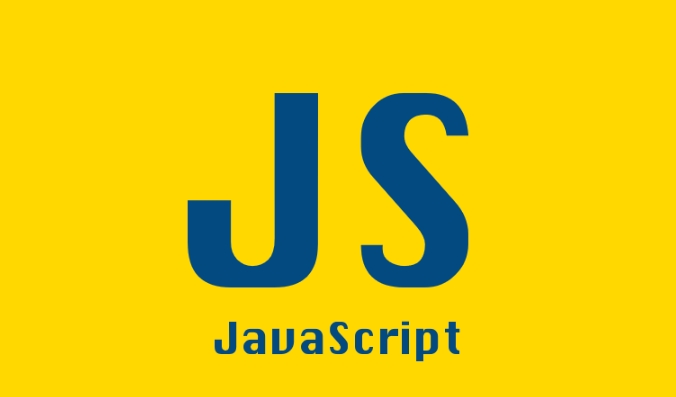JavaScript Template Literals: Syntax and Use Cases
Jul 13, 2025 am 02:28 AMTemplate strings are a feature introduced in JavaScript ES6, which wraps content with backticks and supports variable interpolation and multi-line strings. 1. Use backticks to define a string such as this is a template literal; 2. Insert variables or expressions through ${} syntax such as I am ${age} years old.; 3. Naturally support multi-line text without manually adding newlines. Common scenarios include dynamically generating HTML content, multi-line string output, and simplified conditional logical stitching. Notes include avoiding injection attacks, advanced usage of tag templates, and keeping logic simple.

Template Literals is a practical feature introduced in JavaScript ES6, which makes string stitching and embedding variables more intuitive and concise. Compared with the traditional string splicing method, using template strings can improve code readability and development efficiency.

What is a template string?
Template strings use backquotes (`) to wrap the contents, rather than single or double quotes. Its biggest feature is that it supports variable interpolation and multi-line strings , which are very suitable for handling dynamic content and strings with more complex structures.
const name = 'Alice';
console.log(`Hello, ${name}!`);
// Output: Hello, Alice!This writing not only reduces the plus sign connections when string splicing, but also avoids the confusion caused by quotation mark nesting.

Basic syntax for template strings
The core syntax of template strings includes:
Define a string using backticks :

`This is a template literal`
Insert variables or expressions using
${}syntax:const age = 25; `I am ${age} years old.`;Supports multi-line text without manually adding newlines:
`Line one Line two`;
These syntax features combine to make building complex strings easier and more natural.
Common usage scenarios
1. Dynamically generate HTML content
In front-end development, it is often necessary to generate HTML strings based on data. Template strings can easily embed variables into HTML structures:
const user = { name: 'Bob', role: 'Admin' };
const html = `<div class="user">
<h2>${user.name}</h2>
<p>Role: ${user.role}</p>
</div>`; This method compares The splicing is much clearer and easier to maintain.
2. Multi-line string output
If you want to write multiple lines of strings in the traditional way, you must add them with \n or multiple strings, and the template strings are naturally supported:
`This is line one. This is line two. And this is line three.`;
This is very convenient in scenarios such as debugging logs and generating explanatory texts.
3. Simplify conditional logical stitching
Sometimes we need to splice different content according to the conditions, and we can write simple expressions directly in ${} :
const score = 85;
`Your grade is ${score >= 60 ? 'Pass' : 'Fail'}`;Although it is not recommended to put too complicated logic in it, simple ternary operations are very suitable.
Notes and tips
- Avoid injection attacks : If you put the user input directly into the template string and insert it into the DOM, there may be XSS risks. Make sure that the content is escaped or processed safely.
- Advanced usage of tagged templates : You can customize a function to handle template strings, such as internationalization, CSS interpolation and other advanced uses.
- Keep the logic concise : Although you can write expressions in
${}, try not to put too long or too complicated logic to affect readability.
Basically that's it. Template strings may seem simple, but they are very practical in daily development, especially when you frequently operate strings. Mastering its basic usage and common patterns will allow you to write cleaner and easier to maintain code.
The above is the detailed content of JavaScript Template Literals: Syntax and Use Cases. For more information, please follow other related articles on the PHP Chinese website!

Hot AI Tools

Undress AI Tool
Undress images for free

Undresser.AI Undress
AI-powered app for creating realistic nude photos

AI Clothes Remover
Online AI tool for removing clothes from photos.

Clothoff.io
AI clothes remover

Video Face Swap
Swap faces in any video effortlessly with our completely free AI face swap tool!

Hot Article

Hot Tools

Notepad++7.3.1
Easy-to-use and free code editor

SublimeText3 Chinese version
Chinese version, very easy to use

Zend Studio 13.0.1
Powerful PHP integrated development environment

Dreamweaver CS6
Visual web development tools

SublimeText3 Mac version
God-level code editing software (SublimeText3)

Hot Topics
 Java vs. JavaScript: Clearing Up the Confusion
Jun 20, 2025 am 12:27 AM
Java vs. JavaScript: Clearing Up the Confusion
Jun 20, 2025 am 12:27 AM
Java and JavaScript are different programming languages, each suitable for different application scenarios. Java is used for large enterprise and mobile application development, while JavaScript is mainly used for web page development.
 Javascript Comments: short explanation
Jun 19, 2025 am 12:40 AM
Javascript Comments: short explanation
Jun 19, 2025 am 12:40 AM
JavaScriptcommentsareessentialformaintaining,reading,andguidingcodeexecution.1)Single-linecommentsareusedforquickexplanations.2)Multi-linecommentsexplaincomplexlogicorprovidedetaileddocumentation.3)Inlinecommentsclarifyspecificpartsofcode.Bestpractic
 How to work with dates and times in js?
Jul 01, 2025 am 01:27 AM
How to work with dates and times in js?
Jul 01, 2025 am 01:27 AM
The following points should be noted when processing dates and time in JavaScript: 1. There are many ways to create Date objects. It is recommended to use ISO format strings to ensure compatibility; 2. Get and set time information can be obtained and set methods, and note that the month starts from 0; 3. Manually formatting dates requires strings, and third-party libraries can also be used; 4. It is recommended to use libraries that support time zones, such as Luxon. Mastering these key points can effectively avoid common mistakes.
 Why should you place tags at the bottom of the ?
Jul 02, 2025 am 01:22 AM
Why should you place tags at the bottom of the ?
Jul 02, 2025 am 01:22 AM
PlacingtagsatthebottomofablogpostorwebpageservespracticalpurposesforSEO,userexperience,anddesign.1.IthelpswithSEObyallowingsearchenginestoaccesskeyword-relevanttagswithoutclutteringthemaincontent.2.Itimprovesuserexperiencebykeepingthefocusonthearticl
 JavaScript vs. Java: A Comprehensive Comparison for Developers
Jun 20, 2025 am 12:21 AM
JavaScript vs. Java: A Comprehensive Comparison for Developers
Jun 20, 2025 am 12:21 AM
JavaScriptispreferredforwebdevelopment,whileJavaisbetterforlarge-scalebackendsystemsandAndroidapps.1)JavaScriptexcelsincreatinginteractivewebexperienceswithitsdynamicnatureandDOMmanipulation.2)Javaoffersstrongtypingandobject-orientedfeatures,idealfor
 JavaScript: Exploring Data Types for Efficient Coding
Jun 20, 2025 am 12:46 AM
JavaScript: Exploring Data Types for Efficient Coding
Jun 20, 2025 am 12:46 AM
JavaScripthassevenfundamentaldatatypes:number,string,boolean,undefined,null,object,andsymbol.1)Numbersuseadouble-precisionformat,usefulforwidevaluerangesbutbecautiouswithfloating-pointarithmetic.2)Stringsareimmutable,useefficientconcatenationmethodsf
 What is event bubbling and capturing in the DOM?
Jul 02, 2025 am 01:19 AM
What is event bubbling and capturing in the DOM?
Jul 02, 2025 am 01:19 AM
Event capture and bubble are two stages of event propagation in DOM. Capture is from the top layer to the target element, and bubble is from the target element to the top layer. 1. Event capture is implemented by setting the useCapture parameter of addEventListener to true; 2. Event bubble is the default behavior, useCapture is set to false or omitted; 3. Event propagation can be used to prevent event propagation; 4. Event bubbling supports event delegation to improve dynamic content processing efficiency; 5. Capture can be used to intercept events in advance, such as logging or error processing. Understanding these two phases helps to accurately control the timing and how JavaScript responds to user operations.
 What's the Difference Between Java and JavaScript?
Jun 17, 2025 am 09:17 AM
What's the Difference Between Java and JavaScript?
Jun 17, 2025 am 09:17 AM
Java and JavaScript are different programming languages. 1.Java is a statically typed and compiled language, suitable for enterprise applications and large systems. 2. JavaScript is a dynamic type and interpreted language, mainly used for web interaction and front-end development.







